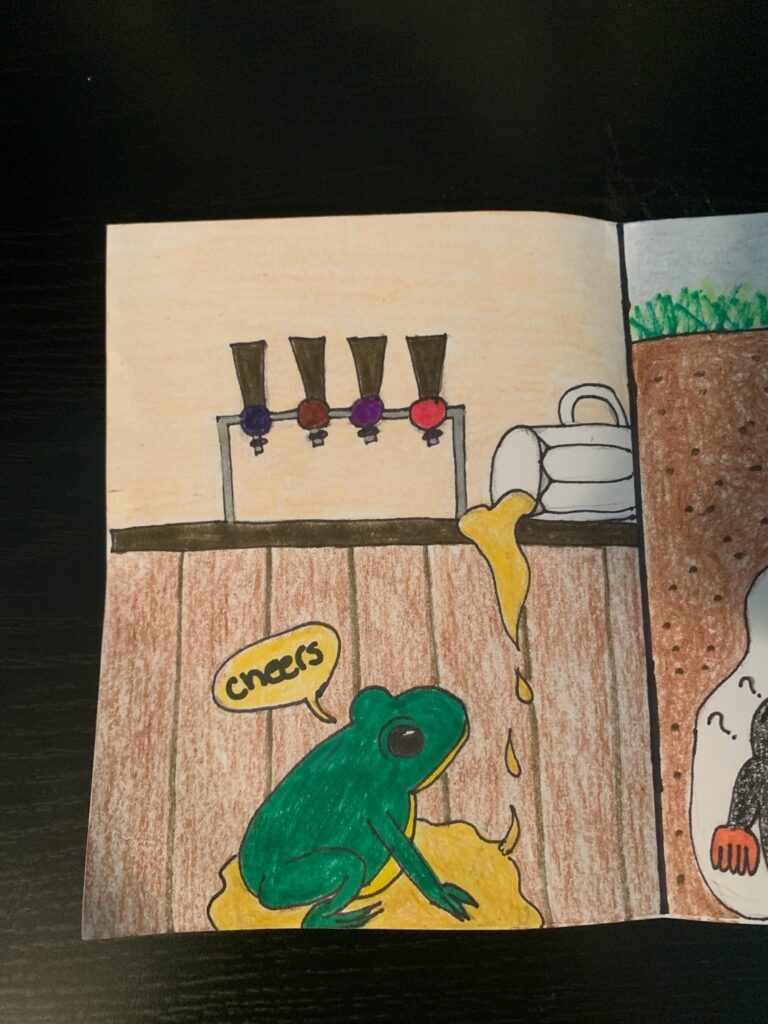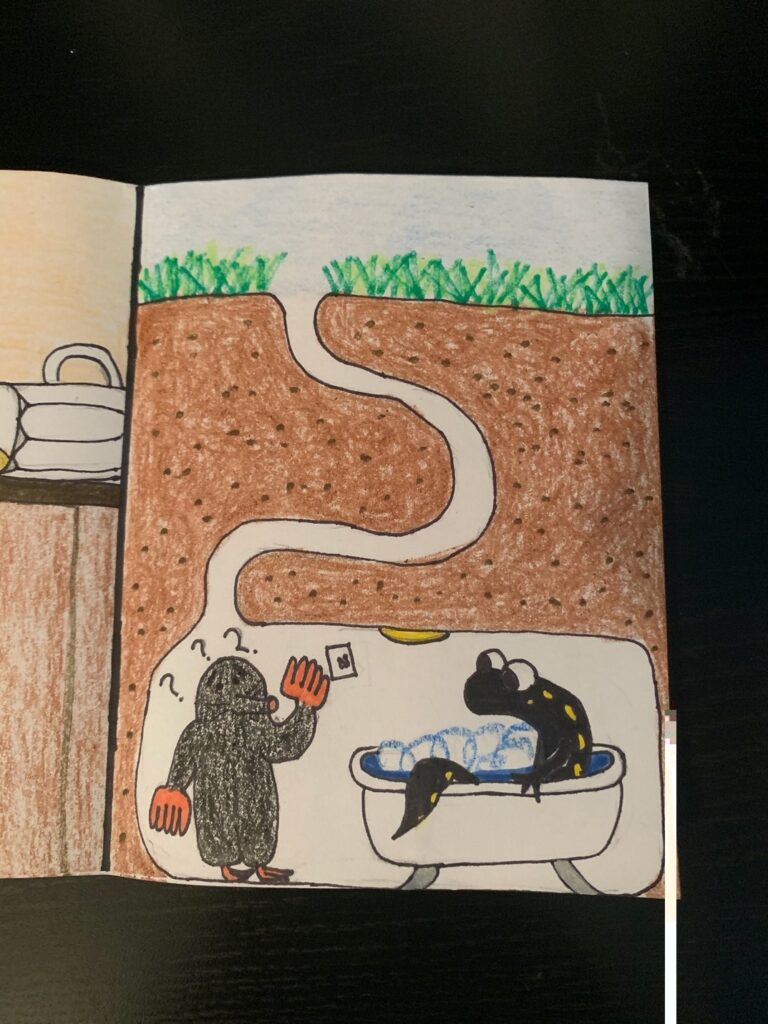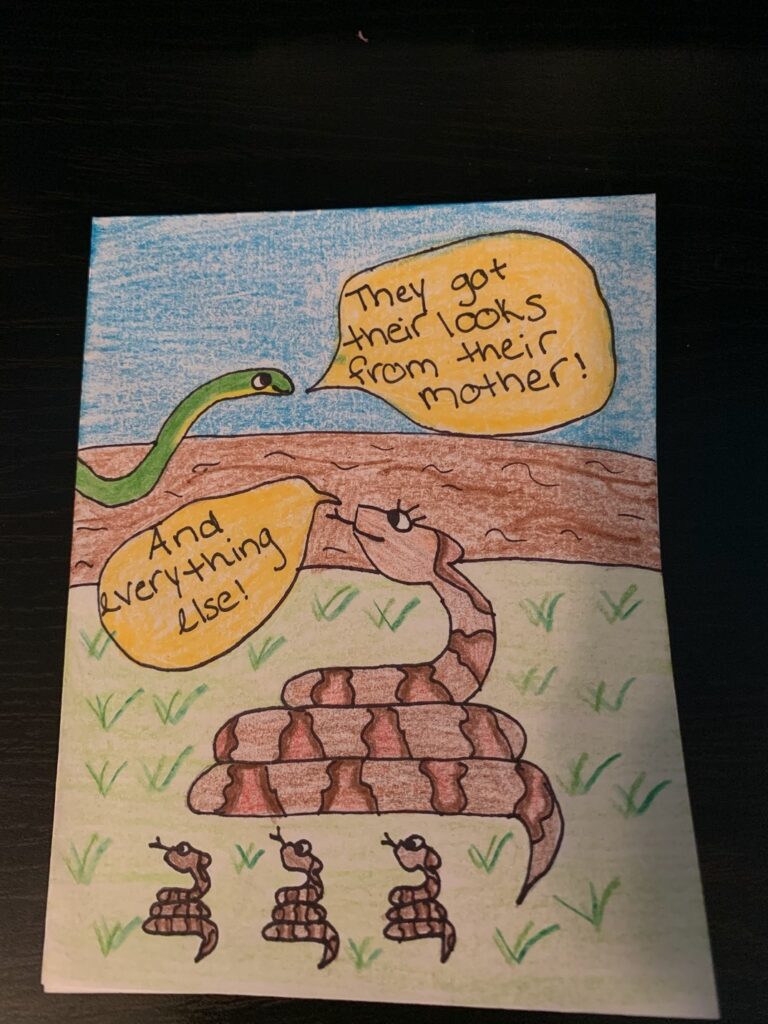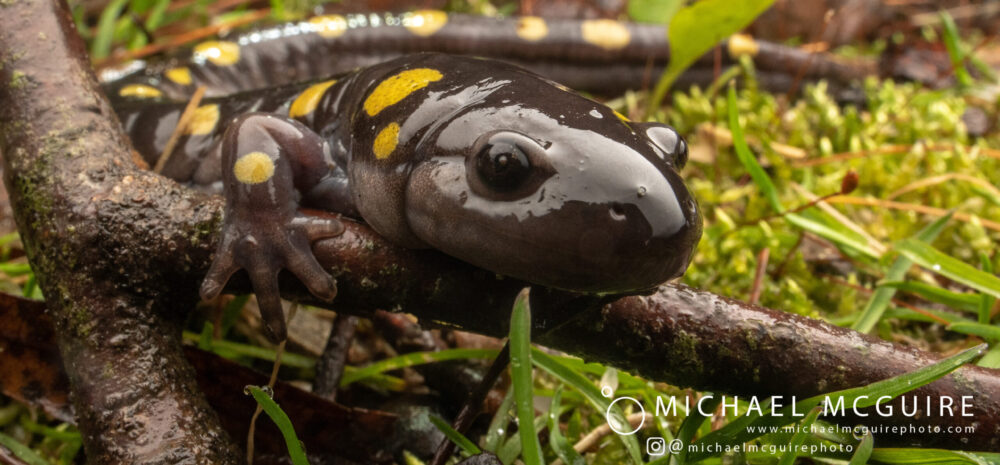Sophie Kogut is a Spring 2020 graduate of the University of Vermont. Sophie turned to humor for this project, and skillfully integrated herpetology concepts, art, and comedy. We hope these bring you a chuckle, or that your learn something new!

In this scene, an artistically liberal green tree frog is shown sitting in a puddle of spilled beer. This demonstrates that frogs (and other amphibians) do not drink via their mouths. Instead, many amphibians adopt a particular water conserving conformation, which involves flattening their underbellies against a moist surface in order to absorb water through their skin; this frog is transitioning into that position. Some species, including many toads, have a segment of skin near their pelvic region that is specially adapted for this purpose, called a drinking patch.

In this scene, an unsuspecting mole comes home to find a visitor taking advantage of the amenities in his home. The culprit is a spotted salamander, the largest of the 3 species of mole salamanders in Vermont. These amphibians earn the designation of mole salamander because they overwinter in the tunnels and burrows dug by other animals, including moles. The salamander here has decided to overwinter in the tunnel of a mole and use his bathtub. The mole is confused about why the salamander is in his house.

In this final scene, a female copperhead snake is seen talking to a smooth green snake. The smooth green snake remarks that the baby copperheads look just like their mother; the female copperhead retorts that not only do they share the same looks, but also all of their genetic material. This is an allusion to the fact that some copperheads reproduce via parthenogenesis, or a form of asexual reproduction where an egg develops without fertilization; many reptiles, amphibians, and birds are known to reproduce in this way. Offspring produced via parthenogenesis are genetic clones of the female. Many species, including the copperhead, are able to switch between parthenogenesis and reproduction via fertilization.
